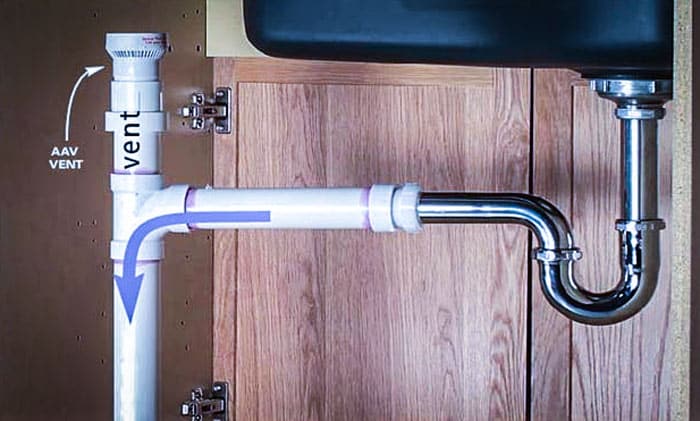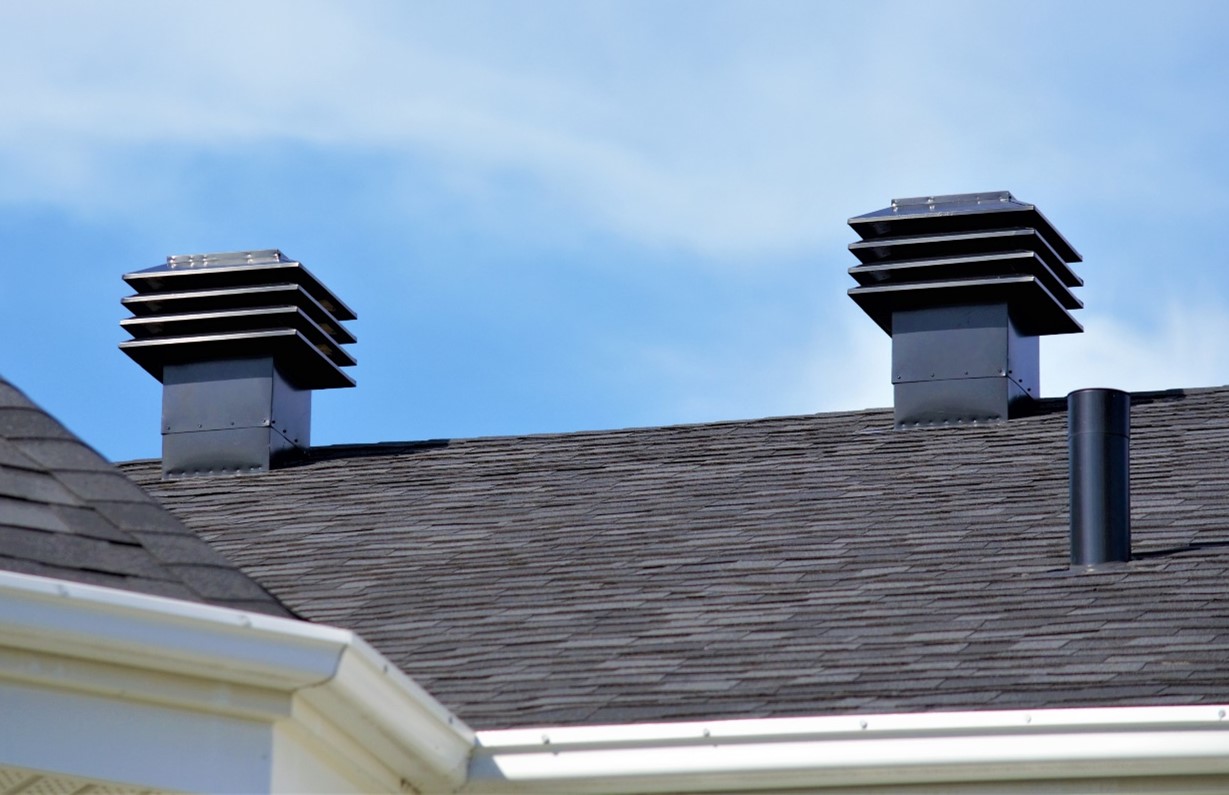The Role of Correct Ventilation in Maintaining Plumbing Systems
The Role of Correct Ventilation in Maintaining Plumbing Systems
Blog Article
The content down below involving What Is a Plumbing Vent and Why Is It Important is exceptionally entertaining. You should investigate it.

Correct ventilation in pipes systems is typically overlooked, yet it is vital for maintaining the performance and safety of your home's plumbing. Air flow helps control atmospheric pressure, prevent the accumulation of unsafe gases, and ensure the effective elimination of waste. In this overview, we will certainly explore the significance of appropriate pipes ventilation, how it functions, and the advantages it gives your pipes system.
Comprehending Ventilation in Plumbing
Air flow in plumbing refers to the network of pipelines that allow air to move through the drainage system. These vents serve multiple objectives, consisting of managing atmospheric pressure within the pipes, avoiding sewer gases from getting in the home, and helping in the smooth flow of wastewater.
How Air Flow Functions in Plumbing Equipments
Air Pressure Regulation
Appropriate ventilation preserves balanced atmospheric pressure within the pipes system. When water streams via pipes, it displaces air. Without ample ventilation, this variation can develop unfavorable stress, resulting in slow down drains or siphoning of water from catches, which can create unpleasant odors to leak into the home.
Stopping Sewage System Gas Buildup
One of one of the most critical features of plumbing vents is to stop drain gases, such as methane and hydrogen sulfide, from accumulating within the home. These gases can posture major wellness dangers and are very flammable. Vent pipelines permit these gases to leave securely outside.
Helping in Waste Elimination
Ventilation assists in the reliable removal of wastewater by stopping airlocks in the water drainage system. When air can flow easily via the vents, it permits water and waste to flow smoothly through the pipes, lowering the risk of clogs and back-ups.
Sorts Of Pipes Vents
Key Heap Vent
The major stack air vent, also referred to as the air vent stack, is the primary air vent in a pipes system. It prolongs from the primary drainpipe line up via the roofing, allowing gases to escape and fresh air to go into the system.
Branch Vent
Branch vents connect to the primary stack air vent and serve private fixtures, such as sinks, bathrooms, and showers. These vents ensure that each fixture has appropriate ventilation to work correctly.
Air Admission Valve (AAV).
An Air Admittance Shutoff (AAV) is a one-way valve that enables air to go into the pipes system without the need for a traditional vent pipeline prolonging via the roofing system. AAVs are typically utilized in renovations or locations where mounting a standard vent is unwise.
Indications of Poor Ventilation in Pipes.
Slow Draining Fixtures.
If your sinks, tubs, or toilets are draining pipes gradually, maybe an indicator of inadequate air flow. Inadequate air flow can produce a vacuum effect, making it difficult for water to drain correctly.
Gurgling Sounds.
Gurgling audios originating from drains are typically a result of air being drawn with water traps as a result of unfavorable stress in the pipes. This is a clear indicator of not enough ventilation.
Undesirable Smells.
Sewer smells inside your home are a red flag that your pipes system is not correctly aerated. This could indicate that sewer gases are not being appropriately vented outside, leading to possibly unsafe conditions.
Typical Air Flow Mistakes.
Inadequate Vent Sizing.
Making use of undersized vent pipelines can cause poor air flow and stress inequalities in the system. It's important to utilize vents that satisfy the particular requirements of your pipes system.
Improper Vent Positioning.
Placing vents also much from the fixtures they offer can minimize their effectiveness. Correct placement ensures that air can move freely and successfully through the system.
Disregarding Code Requirements.
Building ordinance offer details guidelines for plumbing air flow. Neglecting these codes can result in a system that falls short to work properly and may result in costly repair work or carcinogen.
Benefits of Appropriate Air Flow.
Boosted System Efficiency.
Correctly ventilated plumbing systems run a lot more efficiently, with fewer clogs, faster draining, and less strain on the pipes. This efficiency expands the life-span of the pipes system.
Improved Air Top Quality.
By protecting against sewage system gases from entering your home, appropriate ventilation contributes to far better interior air quality, making your living environment healthier and extra comfy.
Avoiding Water Damages.
Appropriate ventilation aids stop water from being siphoned out of traps, which can cause sewer gases getting in the home and triggering water damages in time.
Actions to Guarantee Correct Ventilation.
Consulting Pipes Codes.
Constantly speak with neighborhood plumbing codes when designing or customizing your plumbing system. These codes offer the required standards for correct airing vent and guarantee your system meets security criteria.
Normal Evaluation and Maintenance.
Routine examinations can aid recognize potential air flow concerns prior to they come to be significant troubles. Upkeep tasks, such as cleaning up vent pipes and looking for clogs, are crucial for maintaining the system in good working order.
Expert Installation.
For new installments or significant alterations, it's wise to hire a specialist plumber. They have the competence to make sure the ventilation system is properly developed and installed according to code.
Verdict.
Correct ventilation is an important part of any kind of plumbing system, making certain that it functions effectively and safely. By understanding the importance of air flow, acknowledging the signs of inadequate air flow, and taking steps to keep your system, you can stop costly concerns and shield your home's air high quality.
4 Things You Should Know About Your Plumbing Vents
What Plumbing Vents Are
Also called a vent stack, a plumbing vent is a vertical pipe attached to your drain line that runs through your roof. The plumbing vent pipe, or plumbing air vent, removes gas and odors from your plumbing system and allows fresh air to enter the pipes, helping the water to flow out of the drain pipes.
What Plumbing Vents Do
Plumbing vents have two basic functions. One of which is to allow unpleasant smelling wastewater and sewer gasses to escape your plumbing system instead of entering your home. Plumbing vent pipes are typically located on roofs, away from windows, to ensure the fumes exit the home completely.
The other function of the plumbing vent is to move fresh air into your plumbing system. This helps move water through every plumbing fixture in your house, like toilets and sink drains. Think of the way in which you need to let a little air into the bottle as you pour soda in order to make the drink flow smoothly.
Different Types of Plumbing Vents
True vent: This is the most common vent option. In simplest terms, a true vent is a vertical pipe attached to your drain line that exits through the roof. They often function as the main vent that other fixtures can connect to. Re-vent pipe or auxiliary vent: Attached to the drain line near specific plumbing fixtures, re-vent pipes run up and over to connect to the main vent. Common vent: Two plumbing fixtures installed on opposite sides of a wall are typically tied into the vent stack using something known as a sanitary cross. Wet vent: This venting option operates as a drain pipe and a vent at the same time. Wet vent drainage systems drain water from one fixture while venting the air from another. Although they’ve been used for over 100 years, wet vent systems have only recently been added to the plumbing code in many areas. If you’re planning on installing one in a bathroom remodel, make sure you check your local code prior to construction. Loop vent: For free-standing fixtures like kitchen island sinks, loop vents are ideal. These vent pipes run under the floor, rise from the P-trap, and create a loop inside the cabinet sink. Air admittance valve: An AAV is a one-way mechanical valve typically installed at the site of the plumbing fixture. AAVs allow venting to occur without having to tie into a larger venting system. They’re ideal for venting fixtures where you aren’t able to easily connect to an existing vent system. Common Plumbing Vent Issues
Although vent pipes typically don’t have water flowing through them, they’re still subject to many typical plumbing issues. For example, clogs are one of the most common problems associated with sewer vent pipes. If your vent pipe gets clogged, all of your plumbing fixtures tied into the vent stack will be affected.
A sink with a slow drain that bubbles and gurgles or a strong sewage smell around your toilet are both indicators that your toilet vent pipe is clogged. Because most vent pipes exit through the roof, old leaves, twigs or even a bird’s nest could be clogging the pipe.
Clogs in your vent pipe system cause a buildup of negative pressure, meaning that water won’t be able to flow out of your home very well. It’s similar to putting your finger over the opening of a straw to trap water inside. When you remove your finger, the water is able to flow out of the straw.
If you suspect you have any blockage in your vent, make sure you have a professional come examine the situation. Left unchecked, a blocked air vent can lead to other costly repairs, like leaks and sediment buildup.
Under Pressure
Pipe vents are essential aspects of a home’s plumbing system. Owning a home means learning about all sorts of things you never put much thought into before. But by understanding as much as you can about the important systems of your home, you can keep those budgets intact and those anxiety levels low.
https://www.homeserve.com/en-us/blog/home-improvement/plumbing-vents/

Do you really like reading up on What Is a Plumbing Vent and Why Is It Important? Create feedback further down. We would be delighted to listen to your insights about this content. In hopes to see you back again in the near future. Those who appreciated our page plz make sure you remember to share it. Thank you for going through it.
Go Company Report this page